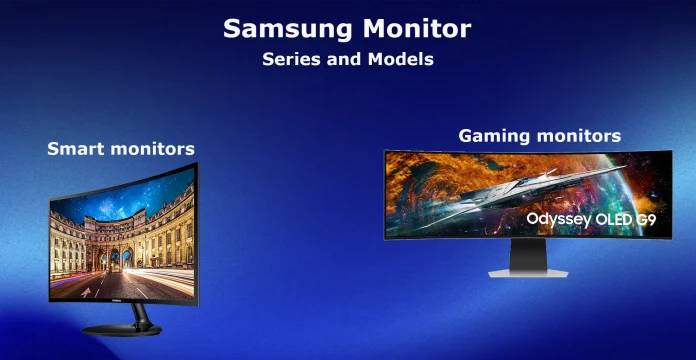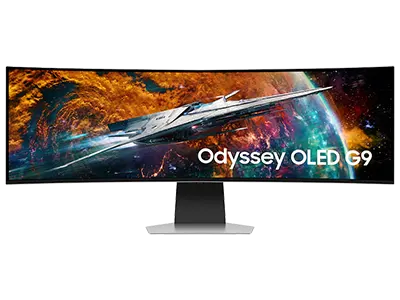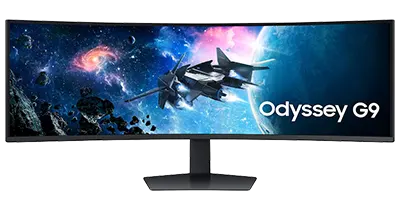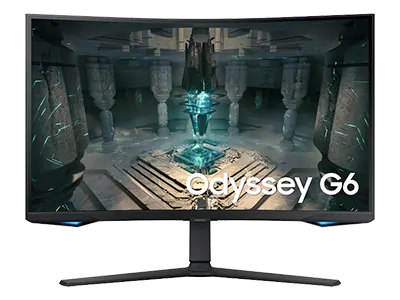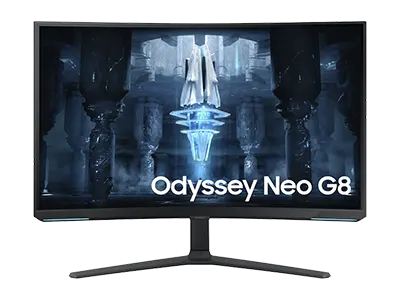Samsung divides its monitors into separate segments, each of which takes into account the specific needs of the user. There are actually a lot of options on how to rank monitors, and you can make up quite an impressive number of choices. However, Samsung officially divides its monitors into the following categories.
- Gaming monitors: These monitors are specifically designed for gaming. They offer high refresh rates, low response times, and technologies like NVIDIA G-SYNC and AMD FreeSync for a smooth and immersive gaming experience.
- Smart monitors: Samsung’s smart monitors run the Tizen OS, just like their Smart TV counterparts. These monitors are feature-rich and designed to be used both as traditional displays and as standalone smart devices that can stream content, browse the web and perform other functions without the need to connect to a PC or mobile device.
- Business Monitors: These monitors are designed specifically for professional environments, this category includes both cheap monitors and high quality monitors, it is a versatile category that can include any monitor. It is more correct to categorize monitors in a completely different way. and I will tell you how.
Rank monitors Samsung by refresh rate
Samsung’s line of monitors is characterized not only by the variety of categories, but also by the range of refresh rates. The refresh rate of a monitor, measured in hertz (Hz), is a critical factor in determining the smoothness of the displayed image. A higher refresh rate provides a smoother visual experience, reduces eye strain and increases user comfort during prolonged use.
The refresh rates supported by Samsung monitors range from 60 Hz to 240 Hz, which allows you to categorize monitors by refresh rate.
- Entry-level monitors:
- Refresh rate: up to 120 Hz
- Specifications: These monitors are suitable for general use, designed for everyday tasks, gaming and general multimedia consumption.
- Mid-range monitors
- Refresh rate: 120-165 Hz
- Features: Targeted at more demanding users, Samsung’s mid-range monitors strike a balance between performance and price. They are well suited for more serious gaming, providing a smoother image.
- High-end monitors
- Refresh rate: 175-240 Hz
- Features: This is the pinnacle of Samsung’s monitor offerings, designed for elite gamers, professionals who demand the highest level of performance. Monitors with this frequency deliver ultra-smooth images, minimal motion blur and excellent response speeds, making them ideal for competitive gaming and graphics-intensive work.
Rating of Samsung monitors by display type
Another important parameter, in addition to the refresh rate, is the display manufacturing technology. Samsung offers monitors with the following types of matrices:
Monitors with OLED displays: These are the most advanced monitors in terms of the quality of the displayed content, the only significant disadvantage of which is the tendency of organic materials to burn out, which is especially critical for monitors, as they display a lot of static images, whether it is a game or a picture from the computer.
LED monitors with VA displays: This is the most common type of monitors offered by Samsung, the advantage of such monitors is a high refresh rate, good contrast, the disadvantage is the change in image quality at an angle, especially vertically, but for monitors this is not critical since the user is located directly in front of the screen.
VA – Mini LED displays: this is a modification of VA displays in which the backlight is upgraded. Using such a backlight only makes sense for gaming monitors with large screens. Therefore, there are not many such monitors.
IPS LED displays. These monitors have good color reproduction, but are a little slower than VA displays. Samsung doesn’t really like to use IPS displays in its monitors, so there aren’t many such monitors.
Rating of monitors by image quality and content display speed
- OLED – 49-inch Odyssey OLED G9 (G95SC): OLED technology is distinguished by its ability to deliver true blacks. The large 49-inch Odyssey OLED G9 screen has dual QHD resolution and a frequency of 240Hz.
- VA – Odyssey G9 Gaming Monitor (49″): VA panel, 240Hz refresh rate, and 1ms response time; this monitor is built for competitive gaming and delivers smooth, blur-free images and detailed renderings on a vast screen.
- VA – Smart Odyssey G65B (27-inch): gaming monitor uses a VA panel and supports a frequency of 240Hz to provide excellent images.
- Mini VA Odyssey Neo G8 (32-inch): Gaming Monitor The Odyssey Neo G8 uses a Mini VA panel, a variant of traditional VA technology with improved backlighting. This monitor supports a 240Hz refresh rate and 1 ms response time, making it a good choice for gamers.
- IPS – Odyssey G4B Gaming Monitor: IPS panels are known for their color accuracy and wide viewing angles; this monitor has a high-end 240Hz panel. The Odyssey G4B takes advantage of these advantages, making it suitable for gaming and professional creative work.
Samsung monitors series and models
The division of monitors into series is a thing of the past, and now it is impossible to say that this monitor is a 5-series and another is a 7-series. This trend is not only among monitors but also, for example, with televisions. Above, I gave an example of how monitors differ. If you decide to buy a new monitor, your choice will likely start with the size of the monitor. Then, based on the size of the monitor, you will select the necessary parameters, such as frame rate, display technology, and, of course, the monitor’s cost. If you think about it, Samsung has only three series of monitors:
- G series: Gaming and Odyssey series of monitors,
- M series: a series of Smart monitors that are essentially TVs.
- No series: a series that includes all other monitors.
If you try to structure Samsung monitors, chances are you won’t succeed: Samsung doesn’t use a consistent model number system. This is for a simple reason: not all monitors are made by Samsung; many models are produced by OEM and ODM manufacturers. This is standard practice; Monitors are purchased much less frequently than televisions, so there is no point in investing resources in developing new monitor models, and there is no need to release new models every year. I have come across monitor models that have been in production for at least five years. Therefore, model numbers may vary from manufacturer to manufacturer. If you want to understand what the monitor model number means and get to the bottom of it, read the article “Samsung Monitor Model Numbers.”

